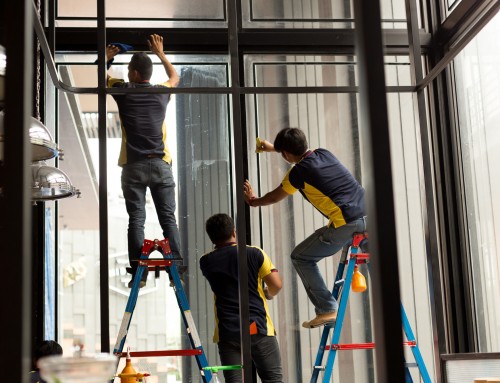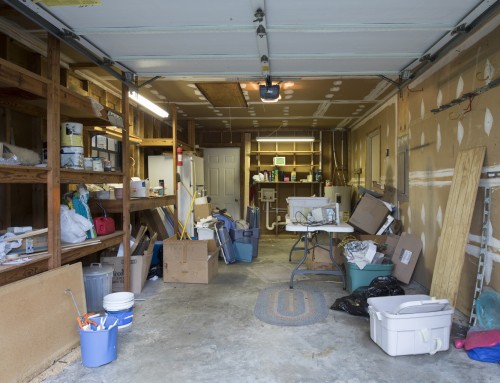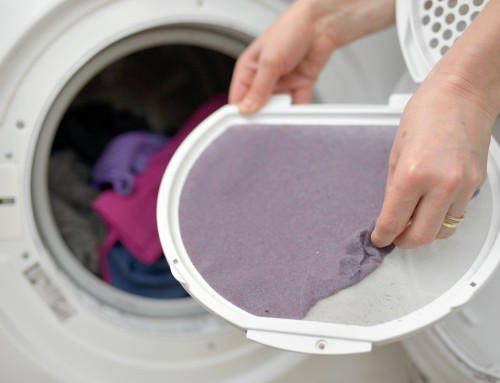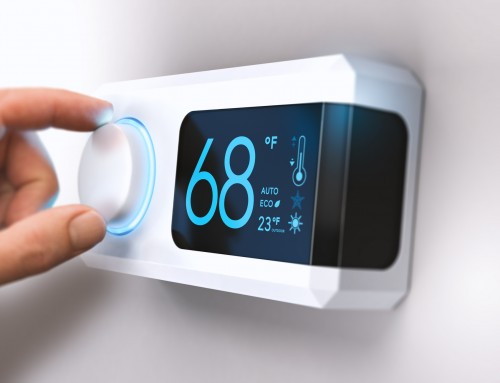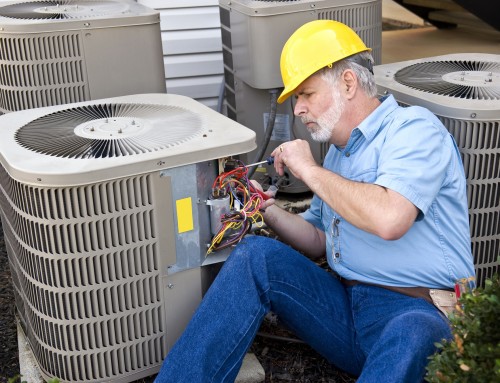The phrase “winter is coming” has been popularized by HBO’s Game of Thrones. While the average homeowner doesn’t have to worry about White Walkers wreaking havoc on their homes, there are considerations to make.
For example, during especially cold winters in places like Montana, Minnesota, and Alaska, if you don’t prepare your house in winter, you could face serious damage to your home.
Ideally, anyone who faces freezing temperatures during the winter or uses heat to stay warm should double-check their homes to maximize efficiency and minimize costs.
How to Prepare Your House in Winter
Unfortunately, homeownership doesn’t come with a how-to manual. For most people, they kind of just assume the house will regulate itself during the winter.
While most homes are fairly automated in terms of regulating temperatures and the other major functions, you can never be too careful. Additionally, no matter how new or advanced homes are, there’s a certain level of maintenance homeowners must take responsibility for.
Take a look at everything you may need to do to prepare your house in winter.
1. Start Prepping Firewood
If your main source of heat during the winter is a fireplace, you better start collecting firewood early on. If you’ve never used a fireplace before and been privileged enough to always live in homes with central heating, it may be a new experience for you.
First, expect to go through way more wood than you think. However, how efficient your fireplace also depends on how well your home is insulated.
If your house is on land, you can harvest firewood from dead trees lying around your property. Otherwise, you’ll have to find a different source.
Additionally, make sure you store your wood in a covered location outside. You can’t afford to allow your firewood to get soaked through by the rain and snow.
2. Have a Backup Plan
Next, learning how to prepare your house in winter may mean having a backup plan in case you experience a power failure or are temporarily out of fuel for your fireplace.
Installing a backup generator for your home to kick on during a power outage will help prevent your family from freezing during especially cold days. You could also have a portable generator on hand for an extra heat source.
Look around your area or online for Diesel generators for sale to see what kind of options are out there.
3. Seal or Upgrade Your Windows
Many homeowners end up throwing money out the window due to poorly sealed or insulated home. Most furnaces are designed to run as long as it takes to reach and maintain the desired temperature.
If you have cold air making its way into your home, your furnace will be working overtime to keep your house heated. We recommend taking the time to check all your windows and exterior doors to see if there’s a breeze coming through anywhere.
You can use sealant around any trim or fascia on the windows to block out air. On doors, you can use weather stripping or a door sweep.
Before it gets too cold outside, do a sweep around the exterior of the home and look for cracks gaps or holes in the siding or foundation. Use an appropriate outdoor sealer for any issues you find.
4. Have Your Furnace Checked
Next, to ensure a smooth winter with comfortable temperatures, schedule a maintenance check for your furnace or fireplace. Having a professional come out to make sure everything is in prime condition before you start using your stove or furnace all winter is ideal.
You also need to make sure you’re replacing your furnace filters or having your chimney cleaned regularly. Failing to do so could result in inefficient heating or a house fire.
5. Prep Your Winter Tools
Next, you’ll need to prep all of your winter tools and make sure there are in working order before the winter hits. The last thing you want is to have your car stuck in the driveway because your snowblower isn’t working.
Alternatively, you need to make sure you have plenty of ice melt and snow shovels to clear non-slippery paths for you and your family. Lastly, if you’re relying on a wood stove for the winter, make sure you have all the tools you need for prepping firewood such as an ax, chainsaw, or log-splitter.
6. Check Your Insulation
Next, as we mentioned above, if your house isn’t holding onto heat, you’re basically throwing money out the window. To prepare your house in winter, make sure the insulation in your attic isn’t letting warm air escape through the roof.
Additionally, if you experience freezing temperatures, it might not be a bad idea to insulate your pipes. Frozen and burst pipes are costly, inconvenient, and all-around headaches.
Some people even choose to insulate their hot water heater in order to maximize efficiency. Constantly burning energy to keep a 50-gallon hot water tank warm in a cold space is not economical.
7. Keep the Thermostat Regulated
One mistake many homeowners make is trying to constantly adjust the thermostat in their home based on their bodily temperature. However, our body temperature fluctuates based on our activities and can’t be trusted to stay regular.
For example, if you’ve just taken a hot bath or worked out, your body temperature will be spiked. Alternatively, if you’ve been sitting around and inactive all day, you’re going to feel colder. Instead of adjusting the temperature on your thermostat and forcing your furnace to keep up, regulate your body temperature with clothing.
Keeping your thermostat at a constant temperature will help you save money and conserve energy.
8. Reverse Your Ceiling Fans
Another tip to prepare your home in winter is to reverse the ceiling fans. Many people don’t know that their ceiling fans actually have two settings. During the colder months, you want the fan blades to turn in a clockwise rotation.
Since heat rises, having the fan blades rotating in a clockwise direction will help push the hot air back down, keeping the room warmer. This is especially helpful if you have tall or vaulted ceilings.
9. Clear Out Your Gutters
Next, before winter and freezing temperatures hit, you should make an effort to clean out your gutters. Clogged gutters can damage your home in a myriad of ways, especially in winter months.
Clogged gutter trap moisture within the debris. When this debris meets freezing temperatures, the moisture expands, sometimes breaking gutters wide open. Additionally, the more ice and water buildup you have in your gutters and near your roof, the more likely you are to experience water damage.
10. Have Your Roof Checked
Since we’re talking about your roof, let’s talk about getting yours checked by a professional roofing contractor. Summers are often accompanied by harsh winds and hail storms. A single storm can severely damage a roof, making it susceptible to other weather conditions.
To prepare your house in winter, make sure you shingles, flashing and the valleys of the roof are in good condition. The last thing you want is to discover a leak in your roof in the middle of winter.
11. Winterize Your Sprinkler System
Next, it’s important to make sure your automatic sprinkler system is primed for the winter. To make sure your sprinkler lines don’t freeze and burst during freezing temperatures, make sure you purge the entire system of any water.
Some systems are easy to use and can easily be done DIY style, while others may require calling in your sprinkler company to do the job for you. Even if you must pay to have it done, it’s better than bursting a sprinkler line, losing water pressure, and dealing with leaks.
12. Detach Hoses From Outside Spigots
Speaking of water systems, to prepare your house in winter, make sure you don’t leave any garden hoses attached to the outside spigot. Doing so will trap water which will freeze and create leaks. Some homeowners who blow their spigot line experience water pouring into the interior of their foundation when they turn on the water in the spring.
Simply detach the hose and roll it up, making sure you’re draining all the water out of it as you do so.
13. Take Care of Your Animals
Finally, we can’t forget about your four-legged friends. Depending on how low temperatures drop and the type of animals you have, they may have to stay inside for the majority of the winter.
If they’re outdoor-only animals, make sure they have plenty of insulation in whatever shelter they stay in. You can use hay, straw, wood chips/shaving, etc. The key is keeping a significant barrier between your animal and the frozen ground and ensuring they have enough to keep warm.
Are You Ready for Winter?
We find that it’s best to prepare your house in winter early on before it gets too cold. Doing so allows you to get a leg up and readjust in the event that something goes awry.
However, if you’re looking for more homeownership advice or tips, check out the rest of our articles, they’re packed full of good information!


